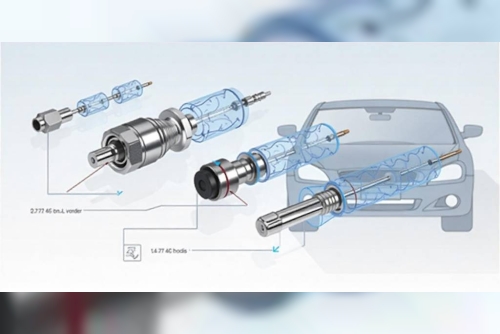Sensors are important in the automobile manufacturing industry. It can help in ensuring that operations run smoothly. From speed to temperature sensors, it has become an integral part in the overall functioning of modern automobiles.
Many vehicles manufacturing companies put their focus on sensors. Therefore, we can observe a substantial expansion in the automotive sensors market size. Based on a leading market research firm, GMI Research, the automotive sensors market share will see substantial development in recent years. They noted that it touched USD 31.6 billion in 2022 and would reach USD 74.4 billion in 2030. This rapid development is due to the growing implementation of autonomous vehicles across the globe along with the rising demand for premium tracking systems and security in vehicles.
The Applications
Sensors are essential for several applications in automobiles.
Engine control and managementSensors are integral to the engine management system. It enables optimal performance, fuel efficiency, and emissions control. Fuel and air mixture control is achieved by oxygen sensors within the exhaust system, allowing the engine control to adjust the mixture for optimal combustion. Meanwhile, the cooling system utilizes temperature sensors to monitor the engine coolant temperature. When it exceeds a specified limit, the engine control unit can adjust the cooling fan operation or alert the driver to a potential overheating problem.
Safety systemsSafety is a cornerstone of vehicle design with sensors playing an essential role in numerous safety-enhancement systems. Accelerometers identify quick deceleration in collisions, prompting the airbag control to deploy the airbags. This deployment serves to protect occupants and decrease injury likelihood in severe accidents. Meanwhile, within the anti-lock braking systems, sensors of wheel speed continuously monitor the rotational speed of every wheel. ABS modifies brake pressure to avoid wheel lockup when it anticipates it, maintaining steering control.
Driver-assistance systemsInnovations have led to the integration of numerous sensors in cars, aimed at enhancing and supporting the driving experience. Ultrasonic sensors placed around the vehicle enable parking assistance by detecting nearby obstructions. They provide drivers with feedback on object proximity, simplifying parking in cramped areas. Meanwhile, lane-keeping systems utilize infrared or optical sensors to detect lane markers. Depending on the system’s sophistication, it may notify the driver or autonomously correct lane drifts detected without signaling.
The Specifications
In modern vehicle systems, sensors are integral components that must meet precise performance criteria to ensure the efficient and safe functioning of automotive systems.
Resolution and accuracyAccuracy measures how closely a sensor’s reading aligns with the actual value. Whereas resolution defines the smallest increment in the measured quantity that induces a change in the output signal.
Range and sensitivitySensitivity refers to how a sensor responds or changes its output in relation to variations in the input or quantity being measured. While range indicates the physical extent of what the sensor can measure. That includes its maximum and minimum value.
Detection of faultsAnother specification of the automotive sensors market is fault diagnostics. Ensuring performance and safety requires awareness of potential sensor failures and their causes. Modern vehicle systems are equipped with self-diagnostic functionalities that continuously monitor the status and operational efficiency.












